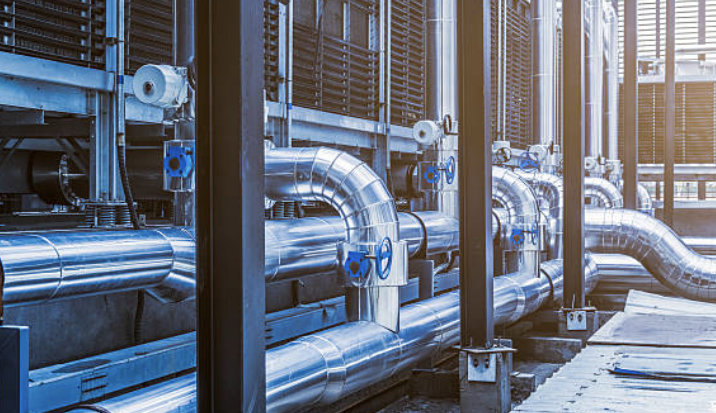
Posted on Friday, May 26, 2023
Heating, Ventilation, and Air Conditioning (HVAC) systems are central to modern comfort in residential, commercial, and industrial spaces. These systems regulate indoor temperatures, maintain air quality, and ensure efficient energy use. At the heart of HVAC production lies metal fabrication—a critical process that shapes the components needed for ductwork, heat exchangers, and structural frames. Without metal fabrication, the intricate designs and precision required for HVAC systems would be unattainable.
Robotic Welding Revolutionizes HVAC Manufacturing
A leading commercial HVAC manufacturer implemented robotic welding systems to meet growing demand for large-scale projects. The robots enhanced production speed and ensured consistent weld quality, enabling the company to deliver lightweight, energy-efficient systems for urban skyscrapers. This innovation reduced production costs while meeting stringent environmental standards.
What is the role of sheet metal in HVAC systems?
Sheet metal is fundamental to HVAC systems as it forms the basis of ducts, housings, and enclosures. Its malleability allows for easy fabrication into shapes and sizes tailored to specific projects, while its durability ensures long-lasting performance.
What are plasma cutters, and why are they essential for duct manufacturing?
Plasma cutters are high-precision tools that use an electrically conductive gas to cut through metal. They are crucial in duct manufacturing because they provide clean, accurate cuts that reduce material waste and ensure tight-fitting ductwork.
Q: How do fabricators ensure energy efficiency in HVAC systems?
A: Fabricators use advanced metal forming techniques to create airtight ducts and precision-engineered components. This reduces air leaks and energy loss, improving overall system efficiency. Additionally, they select materials with high thermal conductivity for heat exchangers, optimizing energy transfer.
Q: What advancements in metal fabrication are benefiting HVAC systems?
A: Innovations like laser cutting, robotic assembly, and lightweight alloys are driving the production of more efficient, durable, and environmentally friendly HVAC components. These technologies enable custom designs and faster production while maintaining high-quality standards.
HVAC systems are an indispensable part of modern living, ensuring comfort and energy efficiency. Metal fabrication plays a pivotal role in crafting the essential components for these systems, from ductwork to structural supports. By leveraging cutting-edge tools like plasma cutters, CNC machines, and robotic welders, manufacturers are meeting the demands of today’s dynamic environments. With advancements in materials and techniques, the future of HVAC systems looks even more promising.

Understanding Coil IDs, Mandrel Sizing, and Shear Pin Safety in Uncoilers
Posted on Wednesday, October 1, 2025
Mismatched sizes can lead to machine damage, downtime, and safety hazards — often evidenced by a shear pin failure.

How Coil Tensile Strength Affects Roll Forming and How to Adjust Your Machine
Posted on Wednesday, October 1, 2025
Changes in tensile strength can significantly affect the finished profile, causing misaligned bends, uneven edges, and out-of-spec parts.

Why Paint Cracks on an Embossing Line Running Pre-Painted Coil and How to Prevent It
Posted on Wednesday, October 1, 2025
This issue not only affects the visual quality of the product but can also lead to increased scrap rates and customer complaints.

The Most Popular Standing Seam Metal Roof Panels in the U.S. — A Comprehensive Guide
Posted on Monday, September 29, 2025
In this post, we’ll explore what panel styles and sizes are most popular in the U.S